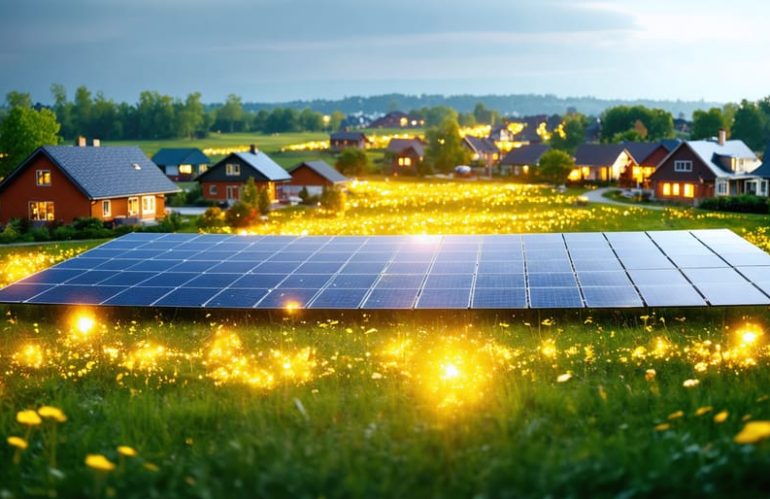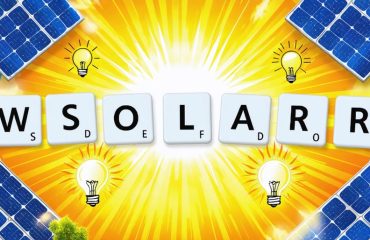Community solar programs are revolutionizing how Americans access renewable energy, offering a legitimate path to clean energy access for all. Unlike traditional rooftop solar, these state-regulated programs allow residents to subscribe to local solar farms, receiving energy credits that directly reduce their monthly utility bills. With over 4,600 megawatts of community solar installed across the U.S. and oversight from the Department of Energy, these programs have proven their legitimacy through transparent billing, guaranteed savings, and flexible contracts. While scams exist in any industry, legitimate community solar projects are backed by established utilities, verified developers, and clear consumer protections. Understanding how to identify reputable providers and evaluate program terms empowers homeowners to confidently participate in this growing clean energy solution.
How Community Solar Actually Works
The Basic Concept
Community solar is a straightforward concept that allows multiple households to benefit from solar energy without installing panels on their own roofs. Think of it as a solar garden where many people share the harvest. A solar developer builds and maintains a large solar array in a suitable location, and local residents can subscribe to receive credits on their electricity bills based on the energy produced by their share of the project.
When you join a community solar program, you’re essentially reserving a portion of the solar farm’s output. Your regular utility company continues to provide your electricity service, but you receive credits on your monthly bill for the energy generated by your share of the solar project. These credits typically result in overall savings on your electricity costs.
The beauty of this system is its simplicity and accessibility. There’s no need for upfront installation costs, roof modifications, or maintenance responsibilities. You can usually cancel your subscription with proper notice, and if you move within the same utility area, you can often take your subscription with you.
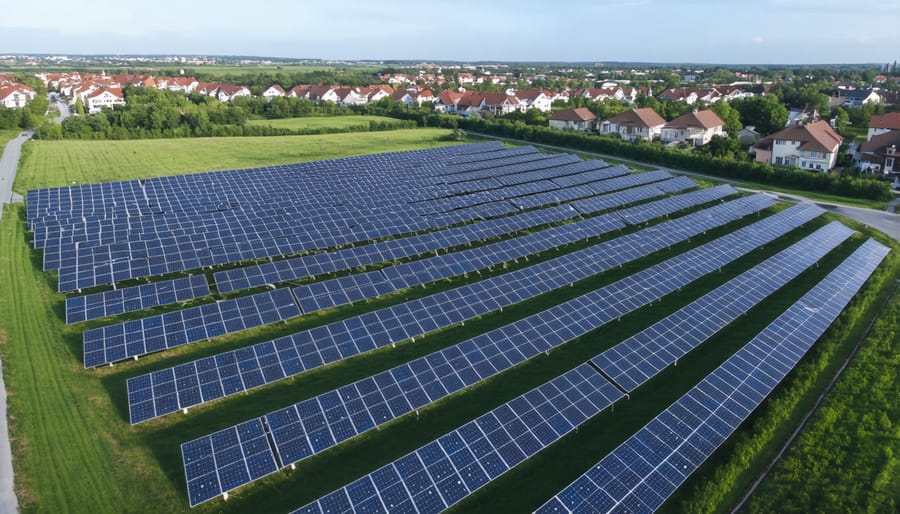
Subscription vs. Ownership Models
Community solar programs typically offer two main participation models: subscription and ownership. With the subscription model, you pay a monthly fee to receive credits on your electricity bill based on your share of the solar farm’s production. This option requires minimal upfront investment and often allows for flexible terms, making it an attractive choice for many households.
The ownership model, on the other hand, involves purchasing a specific portion of the solar array. While this requires a larger initial investment, it typically offers greater long-term savings and may provide additional tax benefits. If you’re interested, you can even start a community solar project in your area.
Both models are legitimate ways to participate in solar energy, but they suit different needs. Subscription models work well for renters or those seeking flexibility, while ownership models appeal to long-term residents looking to maximize their investment. Most reputable community solar programs offer clear terms, transparent pricing, and the ability to transfer or cancel your participation if you move, making either option a viable choice for clean energy access.
Legitimate Benefits of Community Solar
Real Financial Savings
Community solar subscribers typically save between 5-15% on their monthly electricity bills, translating to significant long-term financial benefits. For example, a household with a $150 monthly electric bill could save $90-$270 annually through community solar participation. These savings accumulate without any upfront costs or installation fees.
Let’s break down a real-world scenario: The Smith family in Massachusetts joined a community solar program in 2021. Their average monthly electric bill was $200. Through their subscription, they receive solar credits that reduce their bill by 10%, saving them $20 monthly or $240 yearly. Over their 20-year contract, they’re projected to save approximately $4,800, accounting for standard electricity rate increases.
Many programs offer flexible payment options and guaranteed savings through solar savings and education programs. Subscribers typically receive two bills: one from their utility company (reduced by solar credits) and another from the community solar provider (at a discounted rate). The combined total is always less than their original utility bill.
Most subscribers see savings from their first month, and many programs offer performance guarantees. If the solar farm produces less energy than promised, subscribers are compensated accordingly, ensuring consistent savings without financial risk.
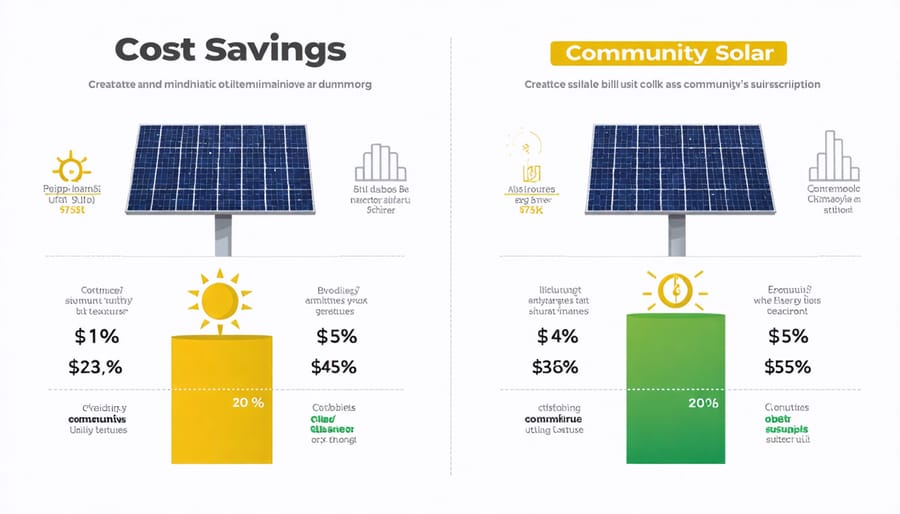
Environmental Impact
Community solar projects deliver substantial environmental benefits that extend far beyond individual households. A typical community solar farm can offset approximately 178,000 metric tons of carbon dioxide emissions annually – equivalent to taking 38,000 cars off the road. These projects also help reduce local air pollution and decrease dependence on fossil fuels.
By participating in community solar, subscribers collectively contribute to the growth of renewable energy infrastructure. Each megawatt of community solar installed typically powers 150-200 homes with clean energy, preventing the burning of roughly 1,500 tons of coal yearly. These installations also require minimal land disruption compared to traditional power plants and can often be built on previously unused or degraded land.
The environmental impact becomes even more significant when considering water conservation. Unlike traditional power plants that require millions of gallons of water for cooling, solar panels need only occasional cleaning. A single community solar project can save approximately 15 million gallons of water annually that would otherwise be used in conventional power generation.
Additionally, community solar farms often incorporate biodiversity measures, such as planting native vegetation between panels and creating wildlife corridors. These practices help support local ecosystems while generating clean energy, making community solar a genuinely sustainable choice for environmentally conscious consumers.
Separating Fact from Fiction
Common Concerns Addressed
Many potential subscribers have valid concerns about community solar programs, and it’s important to address these head-on. One common worry is whether savings are guaranteed. While exact savings can vary, most participants save 5-15% on their electricity bills, with these savings backed by written agreements from reputable providers.
Some people question if they’ll lose power during outages or face service interruptions. Community solar doesn’t affect your utility service at all – you remain connected to the same power grid and receive the same reliable electricity service from your utility company. Your utility continues to handle all maintenance and power delivery.
Another frequent concern is contract length and flexibility. Most community solar agreements offer flexible terms, typically ranging from 12 months to 20 years, with options to transfer or cancel if you move. Many programs also have no upfront costs or installation requirements, eliminating financial risk.
Some worry about the legitimacy of providers. Legitimate community solar companies are licensed, registered with state authorities, and often partner with established utilities. They should readily provide clear documentation, transparent pricing, and detailed contract terms. If a provider pressures you or makes unrealistic promises, that’s a red flag.
Quality of customer service is another consideration. Reputable providers offer dedicated support teams and regular updates about your solar credits and savings.
Red Flags to Watch For
While community solar programs are generally legitimate, it’s important to recognize potential warning signs of questionable offers. Be wary of providers who pressure you to sign up immediately or make unrealistic savings promises, such as guaranteeing specific dollar amounts in savings. Legitimate programs typically provide transparent pricing, clear contract terms, and realistic savings estimates based on your energy usage.
Watch out for companies that require large upfront payments or deposits, as most reputable community solar programs are free to join. Be cautious of providers who can’t or won’t share information about their solar farm locations or their track record in the industry.
Another red flag is the absence of a clear cancellation policy or excessive termination fees. Legitimate programs typically offer flexible terms and reasonable notice periods for cancellation. Additionally, be skeptical of companies that lack proper licensing or aren’t registered with your state’s public utilities commission.
Always research the provider’s reputation, read customer reviews, and verify their credentials before signing up. If something seems too good to be true or feels rushed, take time to evaluate other options.
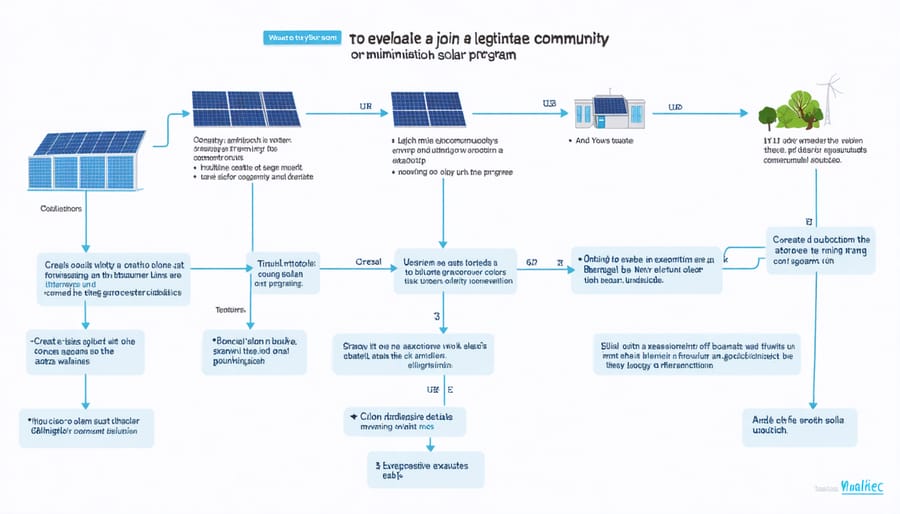
Getting Started Safely
To safely join a community solar program, start by researching providers in your area through your state’s energy office or public utilities commission website. Look for companies with strong track records and positive customer reviews. Legitimate providers should be registered with state authorities and have transparent pricing and contract terms.
When evaluating a program, request detailed documentation about the solar farm’s location, expected energy production, and your estimated savings. Reputable providers will gladly share this information and explain their billing structure clearly. Be wary of companies that pressure you to sign up immediately or make unrealistic savings promises.
Before signing any agreement, carefully review the contract terms, including:
– Contract length and cancellation policy
– Monthly payment structure
– Guaranteed savings percentage
– Credit requirements
– Transfer options if you move
Contact your current utility company to understand how community solar credits will appear on your bill and confirm the provider’s partnership with your utility. Consider asking for references from current customers and check if the provider is affiliated with industry organizations like the Solar Energy Industries Association.
Remember that legitimate community solar programs don’t require upfront payments or solar panel installation on your property. They should offer flexible terms and clear communication channels for customer support. If something feels off, take time to seek additional information or explore other providers.
Community solar is indeed a legitimate and valuable option for homeowners looking to embrace renewable energy while saving money on their electricity bills. As we’ve explored, these programs are regulated, backed by established utilities, and offer tangible benefits to participants. By joining a community solar project, you can support clean energy development, reduce your carbon footprint, and potentially save 5-15% on your monthly electricity costs – all without installing panels on your roof. Before signing up, remember to research providers thoroughly, read contracts carefully, and verify program details with your local utility company. Taking these precautionary steps will help ensure a positive experience with community solar. Ready to make the switch? Contact your local utility provider or a reputable community solar developer to explore available programs in your area.

